8 Plants to Give Your Landscaping Gorgeous Fall Color

8 Plants to Give Your Landscaping Gorgeous Fall Color
August is here! That means we are getting closer and closer to autumn, and all of the beautiful, vibrant colors the season brings.
If you are concerned that your yard won’t showcase all the lovely shades of red, orange, pink, and yellow that you typically see in the fall, we have some plants to share that will solve that problem.
Mums
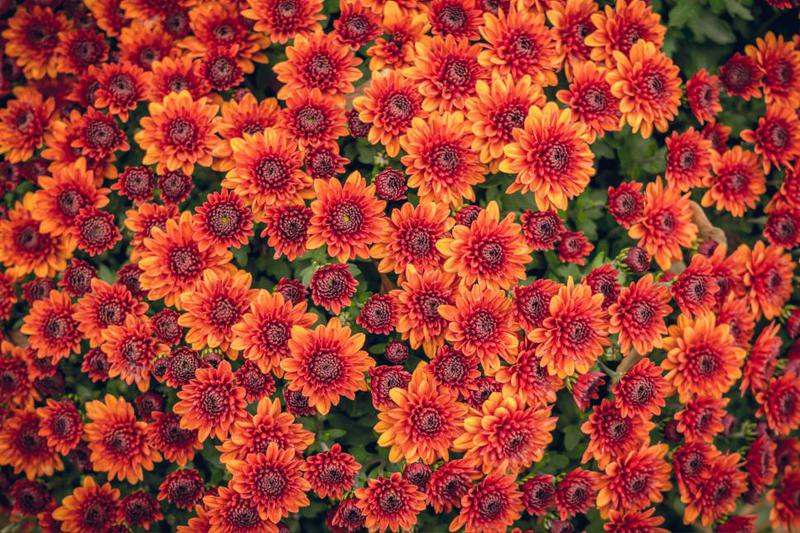
iStockphoto.com/Konoplytska
Mums are a vibrant, small flower that grow in large bunches. They blossom in a wide variety of different colors including shades of purple, reds, whites, pinks, oranges, and yellows – making them the perfect choice for fall.
If you want a more intense effect from the flowers, even from far away, you can use just one or two colors. We also love the ombre effect with flowers, meaning that you arrange them in shades that melt into the next easily.
The best way to implement mums into your yard is to consider the other colors and plants that you keep in your landscaping. Choose colors that will mix well and look vibrant with the other greenery and flowers you grow.
Beautyberry

iStockphoto.com/sebastiannosecondi
Next up we have the gorgeous Beautyberry. This is a deciduous shrub that is known for its tightly clustered berries that last through all four seasons, and how brightly colored the plant is.
It is also commonly known as the American mulberry and the American beautyberry.
These shrubs are incredibly fast-growing, and they grow between 4 to 8 feet tall and wide. They work well in a natural woodland setting – either as a hedge along the edge of your property, or under tall shade trees.
In the spring, Beautyberries have really small, pink lilac-like flowers. Once fall comes around, they have berries that are purple or white for the remainder of the year, and bright yellow foliage. Those berries are edible, but birds don’t prefer to eat them over other fruits.
Pansies

Pansies are one of the most popular cold-tolerant plants, and are perfect for your fall flower beds. They are hardy bi-annuals that can survive extreme cold, even with snow, without having their blossoms damaged.
In the early springtime, they grow quickly, and they are fully blossomed when other flowers are still getting ready to start growing.
They do prefer a sunny spot in your yard. If they are placed in shade, they will stretch out and produce way less flowers. Light shade will be tolerated by them, and they don’t mind it during the hottest part of the day.
Russian Sage
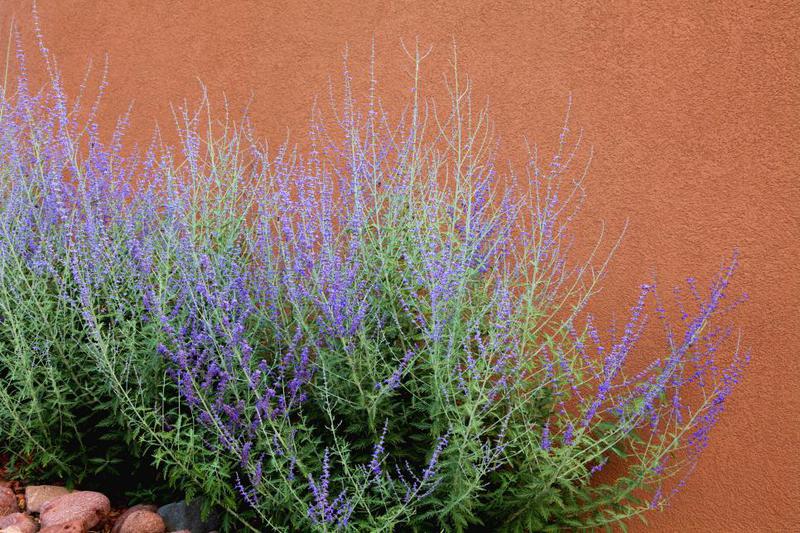
iStockphoto.com/cstar55
Russian Sage is popular for its beautiful silver-gray foliage and its vibrant purple flowers. The clusters of flowers bloom from late spring until autumn, and they blossom thickly enough to almost cover all of its leaves.
This plant is perfect for a ground cover for open areas or as a specimen plant. It prefers overly dry conditions, making it the perfect option for xeriscaping.
They do not require a whole lot of care or watering. Since they thrive in dry soil and rarely need more water once they’re established, there’s very little you have to do. You should scatter a handful or two of fertilizer or compost around every plant every other year in the late fall season.
During the spring and fall, they will need to be pruned fairly regularly as well.
Goldenrod
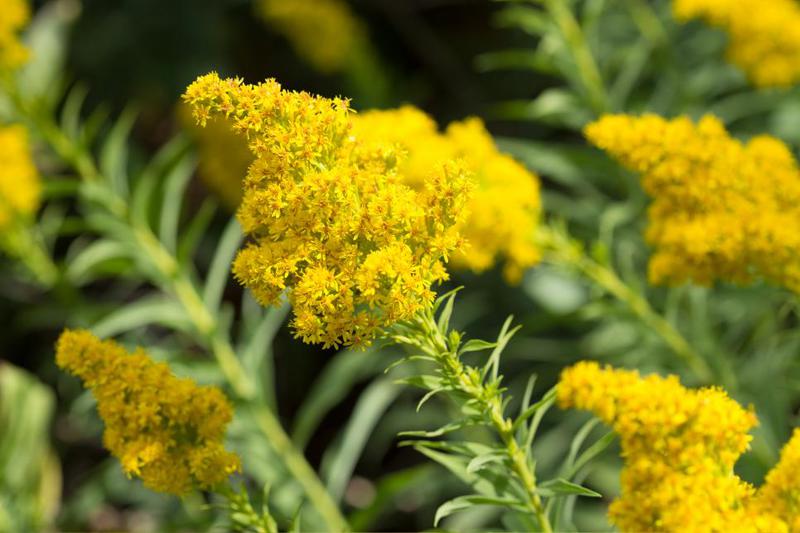
iStockphoto.com/DavidOrr
Goldenrod is a great, easy way to add bright splashes of yellow to your landscaping. This plant is topped with huge plumes of fluffy, vibrant yellow flowers, and have many uses including attracting butterflies and providing shelter to larvae of beneficial insects.
They are considered a weed by some, but if you like the look of them, they’re easy to grow and offer some great color.
In addition to attracting butterflies, Goldenrod also provides nectar to bees, it can draw bad bugs away from your vegetable garden, and they also attract useful bugs to the area.
There are hundreds of different varieties of Goldenrod, meaning that you can find an option for any different climate you would like.
Blue Fescue
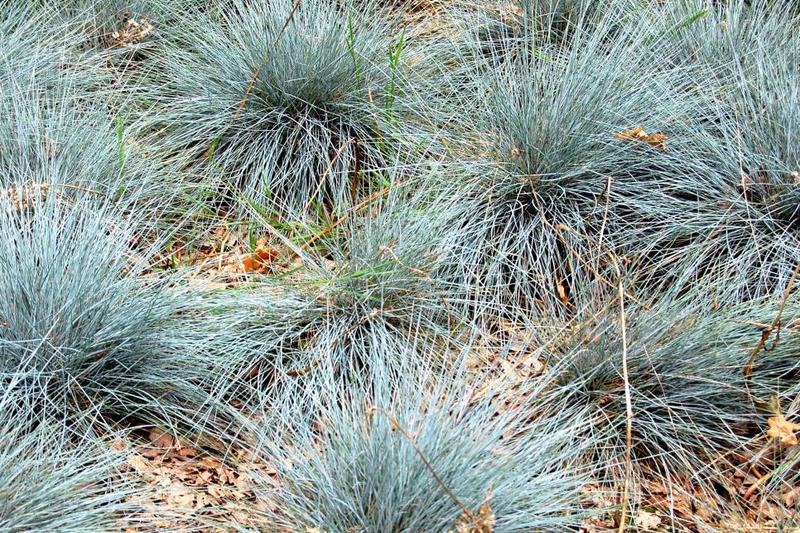
iStockphoto.com/brytta
This perennial grass is incredibly versatile, and has a gorgeous blue color that will last through every day of the year.
Blue Fescue can be used in containers, mass plantings, as an accent plant, etc. It has a clump-forming habit, meaning that it forms balls of foliage that are topped with a soft, feathery straw bloom stalk in the summertime.
It is also extremely tolerant to drought, so it’s perfect for rock gardens and xeriscaping.
Japanese Maple Tree

iStockphoto.com/johnandersonphoto
This incredibly versatile tree is perfect for any season of the year. The Japanese Maple Tree is bright red in the springtime, a gorgeous green in the summer, and in the fall the colors are vibrant yellow and orange.
Their leaves can either be lacy or palm-shaped, sometimes they are almost feather-like, and their available color palettes can sometimes include orange, purple, white, pink, red, and green.
These trees range anywhere from 2 to 30 feet tall, and they can be mounding, upright, cascading, rounded, weeping, or dwarf forms. You have many different choices when it comes to the shape, size, and coloring, which is a great reason to get one. The options are endless!
Now because many are grafted they are also higher in price, but they will add quite a bit of value to your home and landscaping, making them a great investment.
‘Morning Light’ Miscanthus
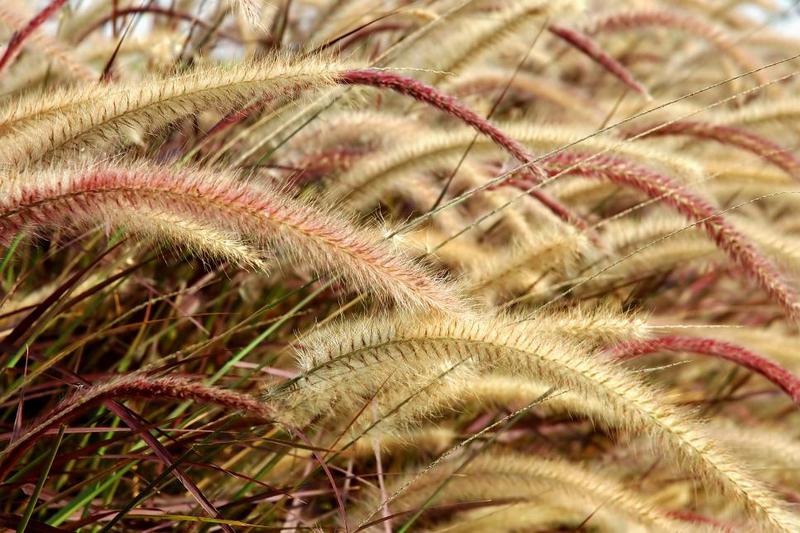
iStockphoto.com/NourElRefai
The ‘Morning Light’ Miscanthus consists of incredibly dense clumps of thin, green blades with white margins and mid veins that create a silver, almost shimmering appearance.
This grass can add excitement to any yard. The reddish inflorescences will persist even through the winter, making them perfect for your landscaping in cold weather. They offer fantastic texture for flower beds and the borders of your yards.
These plants are easily grown in evenly moist, well-drained soils. You will want to water them deeply and regularly through their first growing season to establish their extensive root system. Once they are established, they can tolerate moderate dry spells.
We hope you enjoyed our list of our favorite autumn-colored plants! Did any of your favorite choices make it on the list? What do you plant for some extra fall colors?





